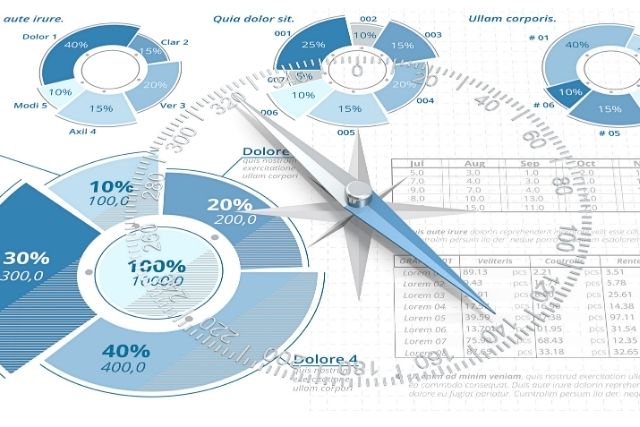
Making worldwide decisions is essential for success in the fast-paced world of finance. Traditional financial analysis methods often need to catch up when dealing with complex scenarios and uncertain outcomes. However, there is a powerful tool that can help professionals navigate through these challenges in decision trees. Decision trees visually represent possible outcomes, enabling finance experts to analyze and predict various financial scenarios.
This comprehensive guide will explore the tremendous potential and practical applications of decision trees in finance. Whether you want to improve as a financial decision-maker, investor, or financial analyst, I’ll go over some crucial facts in this piece to help you get the most out of your financial insights.
Table of contents
- Understanding Decision Trees in Finance
- Applications of Decision Trees in Finance
- Benefits of Decision Trees in Finance
- Methodology and Techniques in Building Decision Trees
- Real-World Examples of Decision Trees in Finance
- Challenges and Considerations in Using Decision Trees in Finance
- Best Practices for Effective Implementation
- Future Trends and Advancement
- Conclusion
Understanding Decision Trees in Finance

First, define decision trees and examine why they are essential to the financial sector before discussing their applications and advantages.
Don’t miss: Exeter Finance: Your Financial Journey with Expert Guidance
Decision trees are a graphical representation of decision-making processes, where each branch represents a possible decision or outcome. These trees help finance professionals evaluate options, assess risks, and identify the most optimal action.
Applications of Decision Trees in Finance
1. Risk Assessment and Management: Decision trees are instrumental in assessing and managing risks in the financial sector. Decision trees visually represent risk probabilities by considering various factors and potential outcomes, allowing finance professionals to make informed decisions and develop risk mitigation strategies.
2. Portfolio Optimization and Asset Allocation: Decision trees help optimize investment portfolios by considering risk tolerance, expected returns, and market conditions. By analyzing different asset allocation strategies, finance professionals can make data-driven decisions that maximize portfolio performance.
Don’t miss: Personal Finance Management | Mastering Your Finances
3. Credit Scoring and Loan Evaluation: Decision trees are vital in evaluating creditworthiness and determining the likelihood of default. By analyzing various variables such as credit history, income, and financial ratios, decision trees provide a systematic approach to assessing credit risk and making lending decisions.
4. Option Pricing and Valuation: Decision trees are widely used in option pricing and valuation models. By considering factors such as underlying asset prices, time to expiration, and volatility, decision trees enable finance professionals to estimate option prices and make informed trading decisions.
Benefits of Decision Trees in Finance

1. Enhanced Decision-Making: Decision trees provide a structured framework for analyzing complex financial scenarios, enabling finance professionals to make well-informed decisions based on data-driven insights.
2. Visual Representation: Decision trees offer a visual representation of financial decisions, making it easier for professionals to understand and communicate complex concepts to stakeholders.
Don’t miss: Snap Finance: Fast and Flexible Financing for Your Needs
3. Flexibility and Adaptability: Decision trees can adapt to changing market conditions and incorporate new information, allowing finance professionals to adjust their strategies and make timely decisions.
4. Risk Assessment: This helps finance professionals assess and manage risks effectively by considering multiple factors and potential outcomes.
Methodology and Techniques in Building Decision Trees
Building accurate and reliable decision trees requires careful consideration of several factors. These include data collection and preparation, attribute selection measures, tree construction algorithms, and pruning and optimization techniques.
Don’t miss: Top 10 Best High Paying Jobs in Finance
Finance professionals can ensure the validity and accuracy of their models by following best practices in each stage of the decision tree-building process.
Real-World Examples of Decision Trees in Finance
Let’s look at some actual instances to demonstrate the proper uses in finance:
1. Making Smart Investment Decisions: Decision trees can assist investors in analyzing risk-return trade-offs, assessing investment possibilities, and making wise investment decisions.
2. Credit Risk Assessment: Financial institutions use decision trees to assess the creditworthiness of individuals and businesses, determining the likelihood of default and setting appropriate interest rates.
3. Fraud Detection: Decision trees aid in detecting trends and abnormalities in fraud activities and financial transactions.
Challenges and Considerations in Using Decision Trees in Finance

Numerous benefits, but there are some challenges to be aware of. These include ensuring data quality and availability, avoiding overfitting and model complexity, interpreting and communicating results effectively, and incorporating external factors that may impact financial outcomes.
Best Practices for Effective Implementation
To maximize the effectiveness of decision trees in finance, finance professionals should consider best practices such as choosing the suitable decision tree algorithm and optimizing data preprocessing.
Don’t miss: Most Important Things to Know About Personal Finance
And feature selection, rigorous model validation and testing, and regularly monitoring and updating the models.
Future Trends and Advancement
The field is constantly evolving. Some future trends and advancements to watch out for include:
- Combining machine learning with artificial intelligence.
- Leveraging big data and advanced analytics.
- Enhancing the explainability and interpretability of decision tree models.
- Tailoring industry-specific applications for optimal results.
Conclusion
Decision trees have become indispensable tools in the finance industry, enabling professionals to maximize financial insights and make informed decisions. By understanding the concepts, applications, benefits, methodology, and associated challenges, professionals can confidently leverage this powerful technique to navigate complex financial scenarios. Embracing the power of decision trees will undoubtedly enhance financial decision-making, mitigate risks, and drive success in today’s dynamic economic landscape.
Leave a Reply